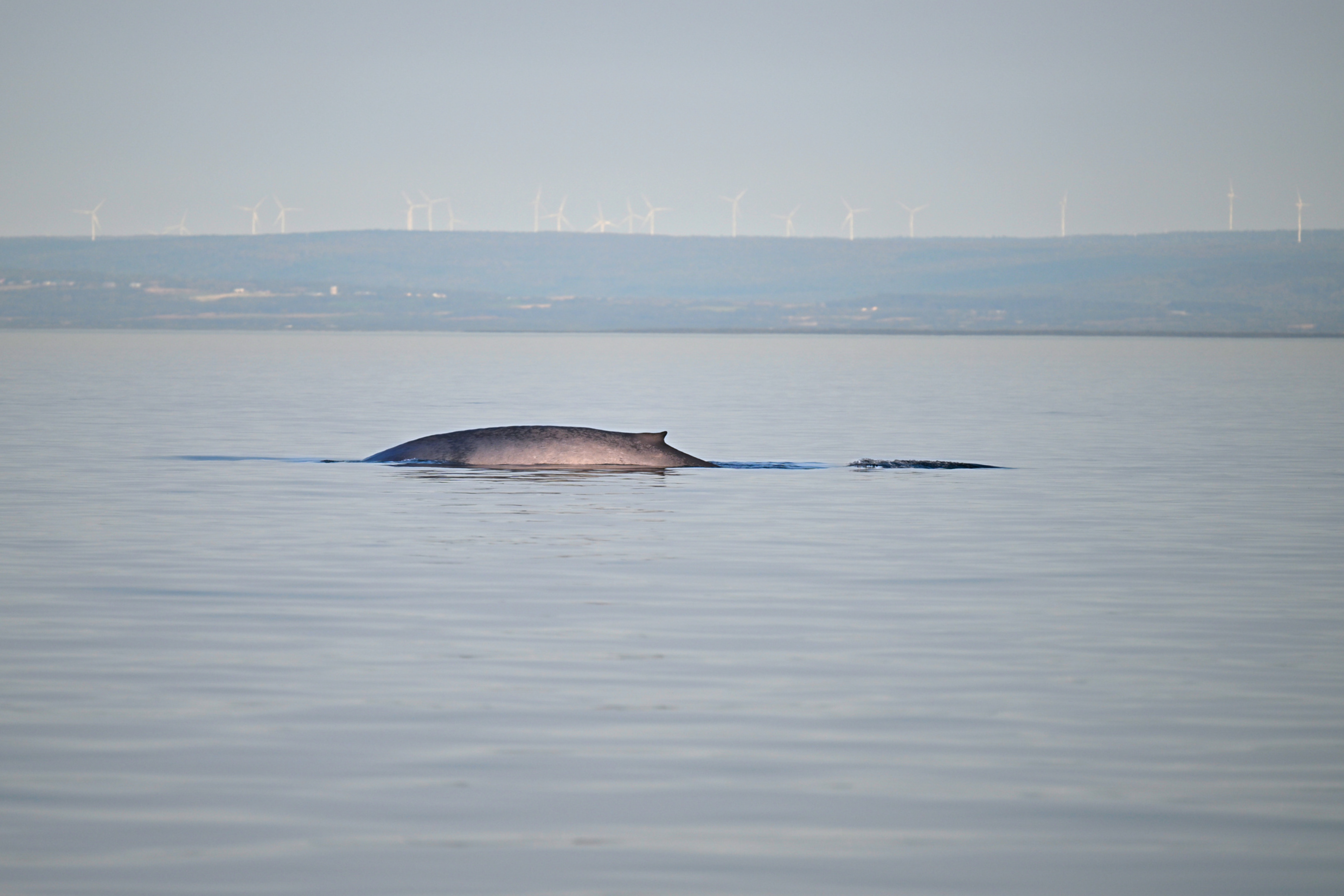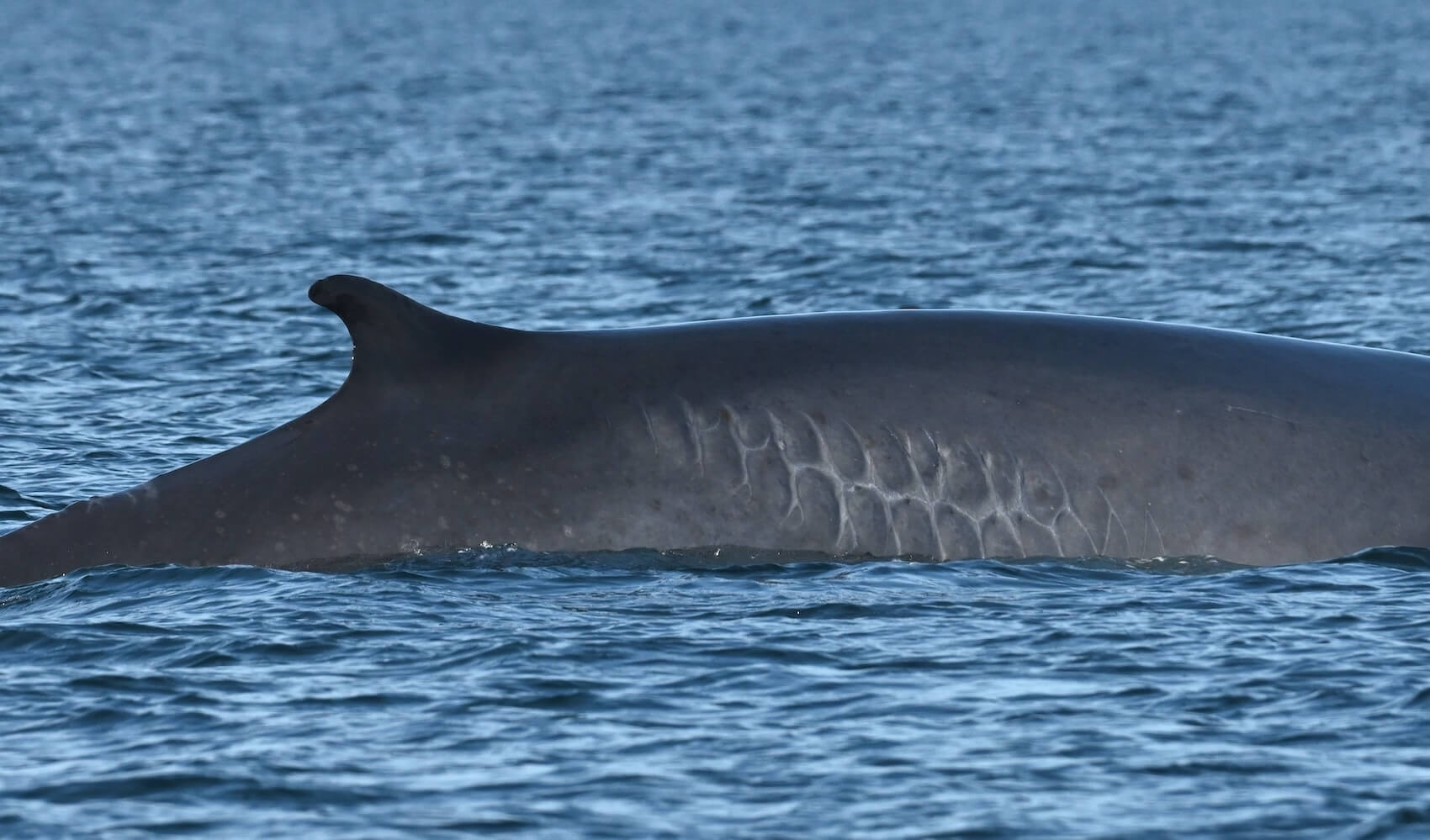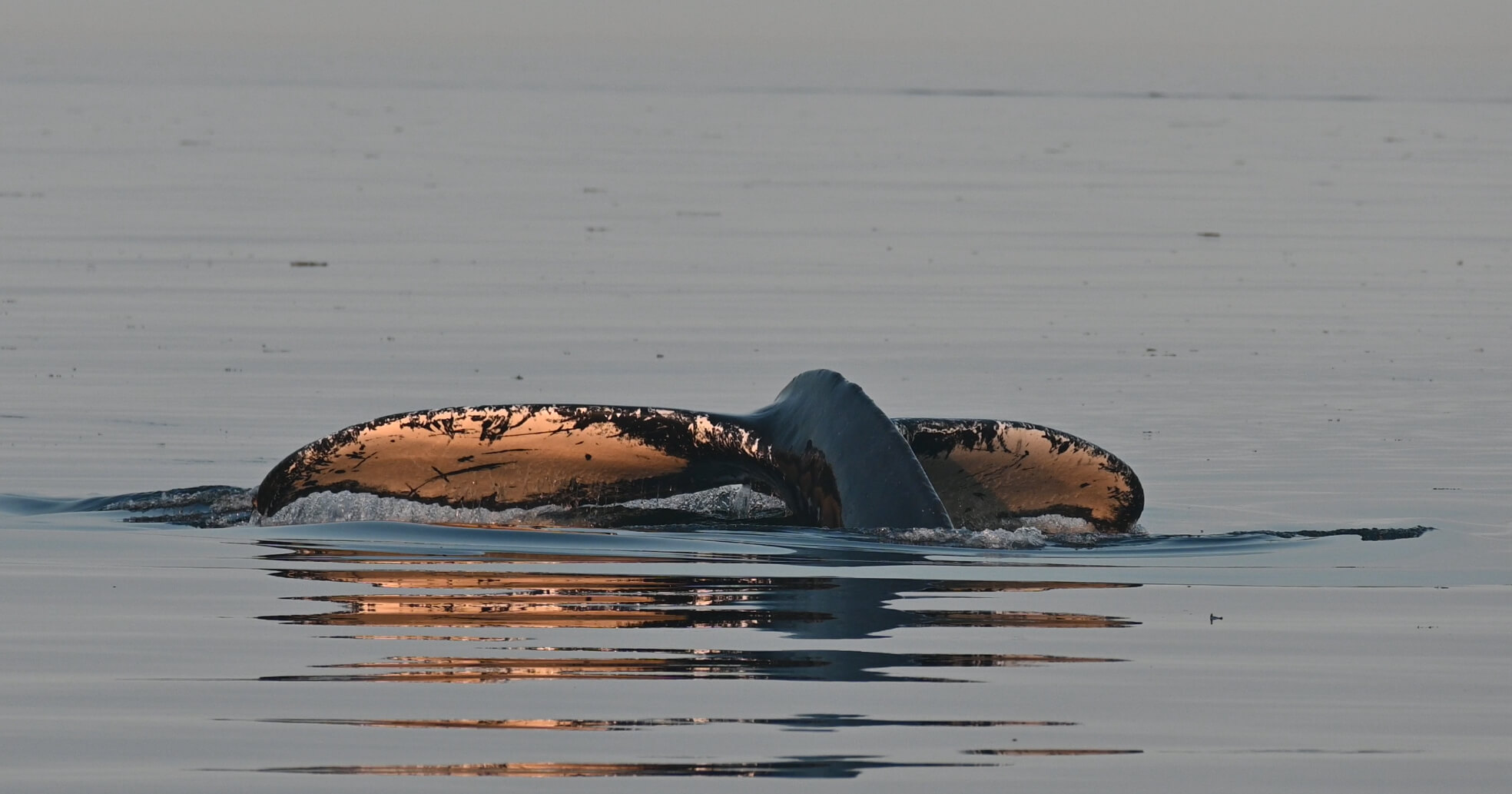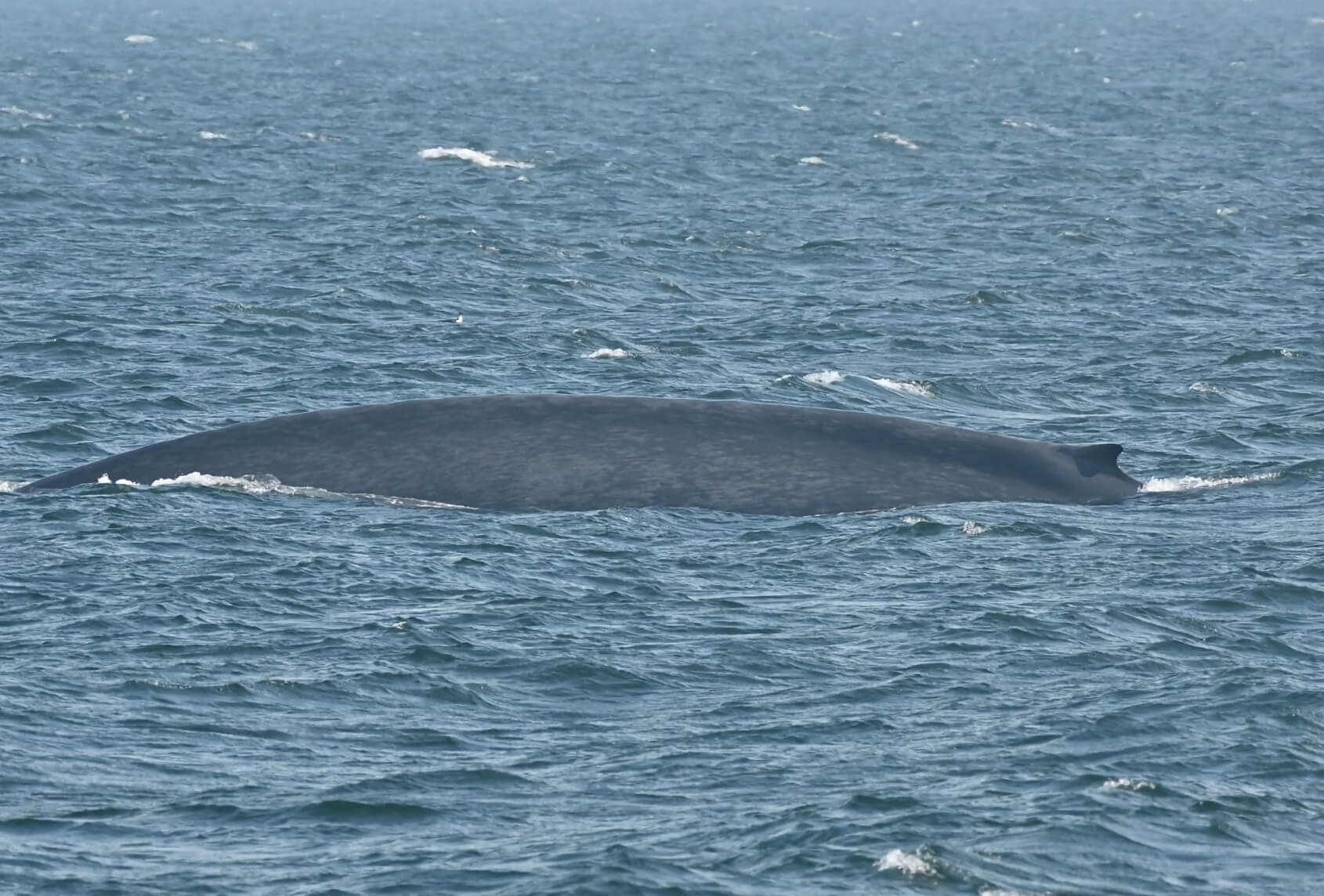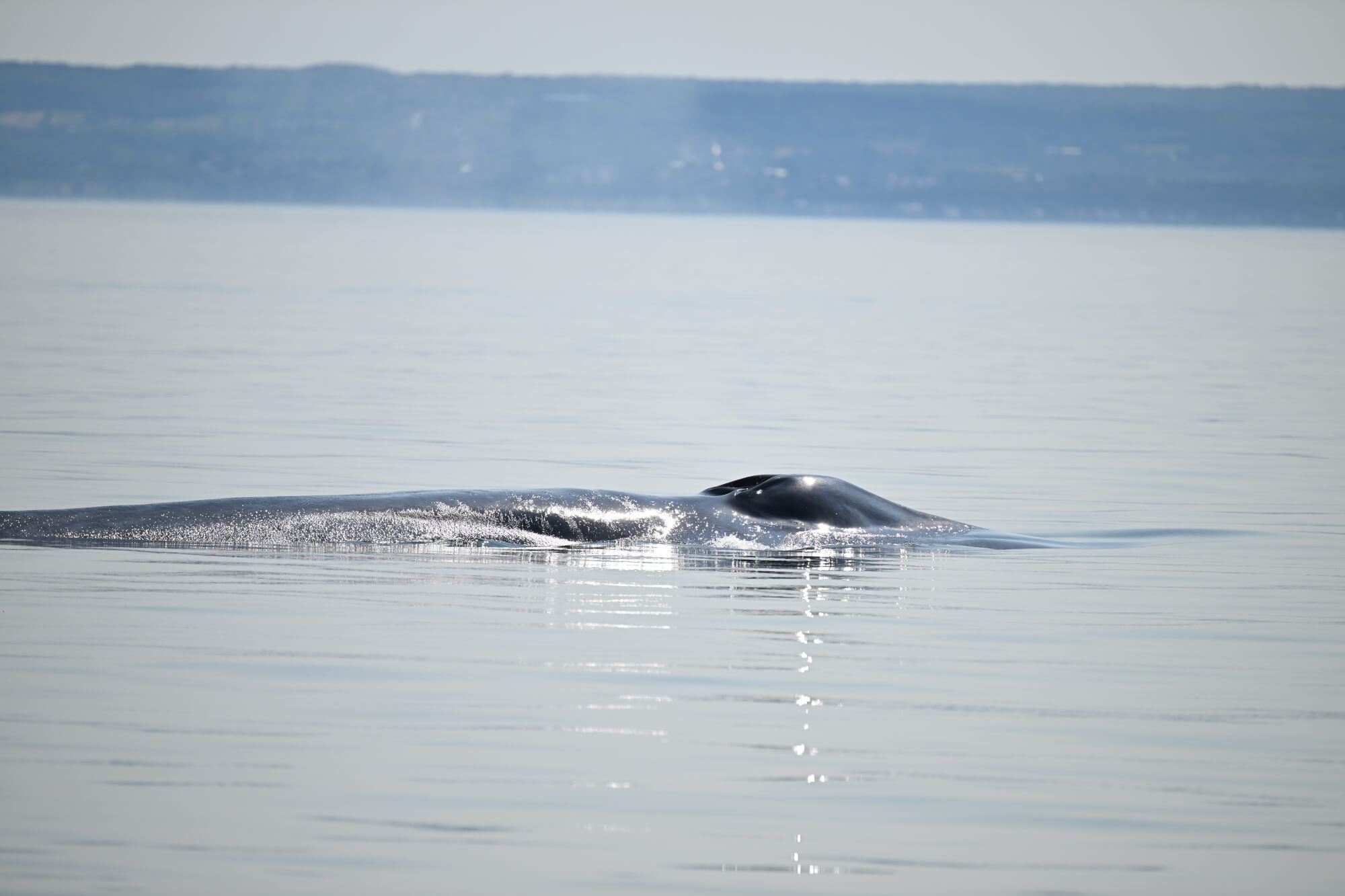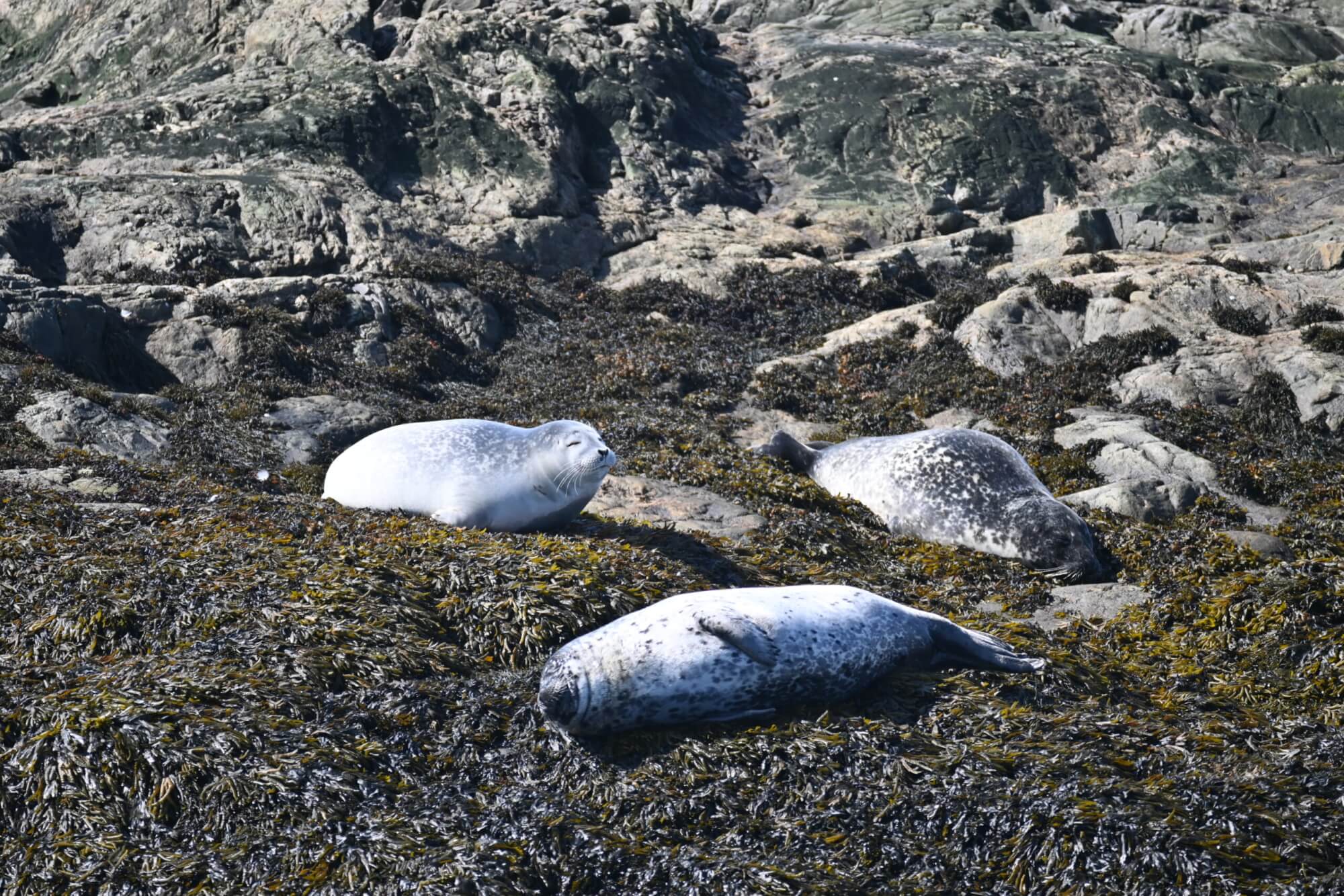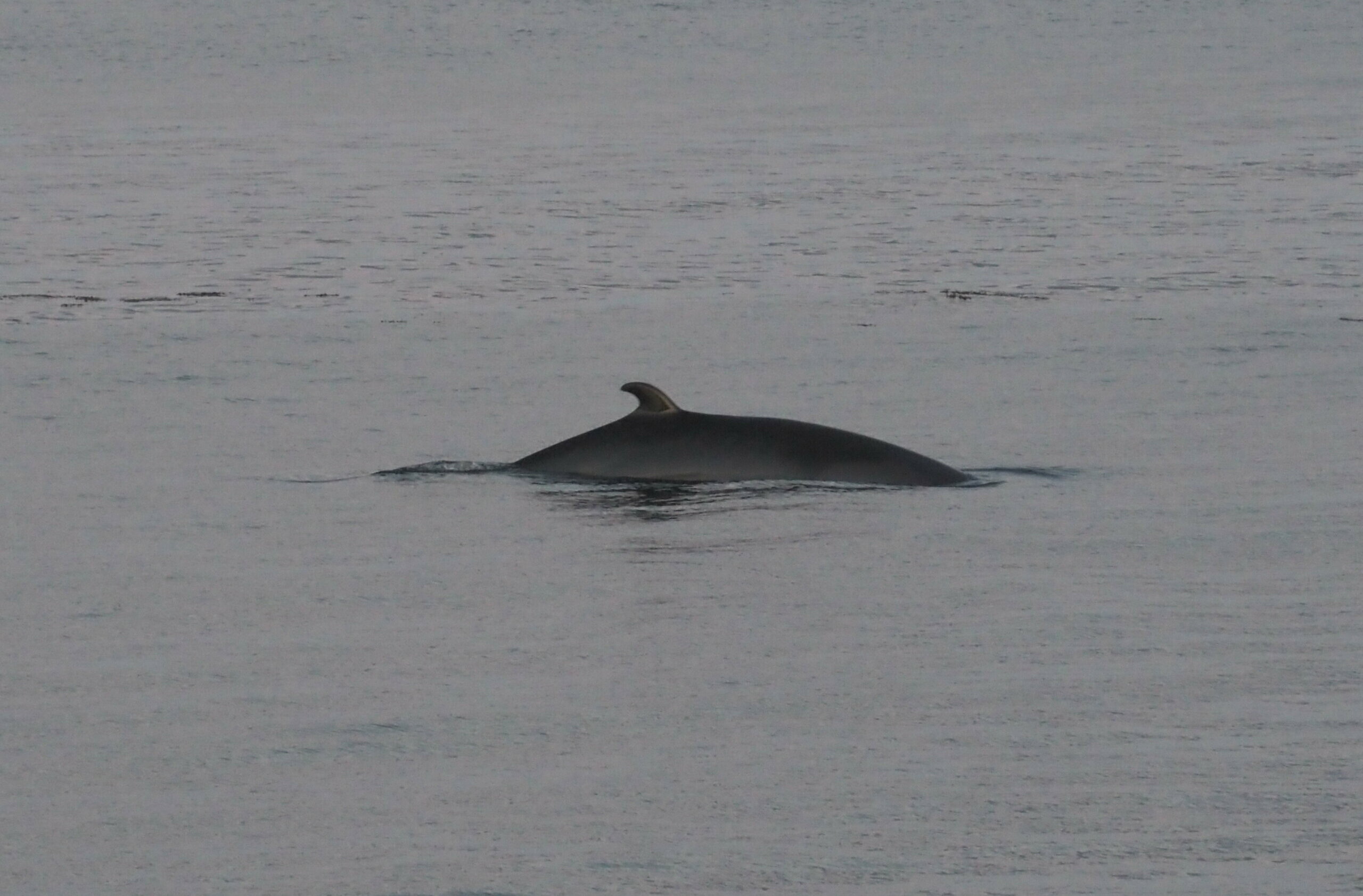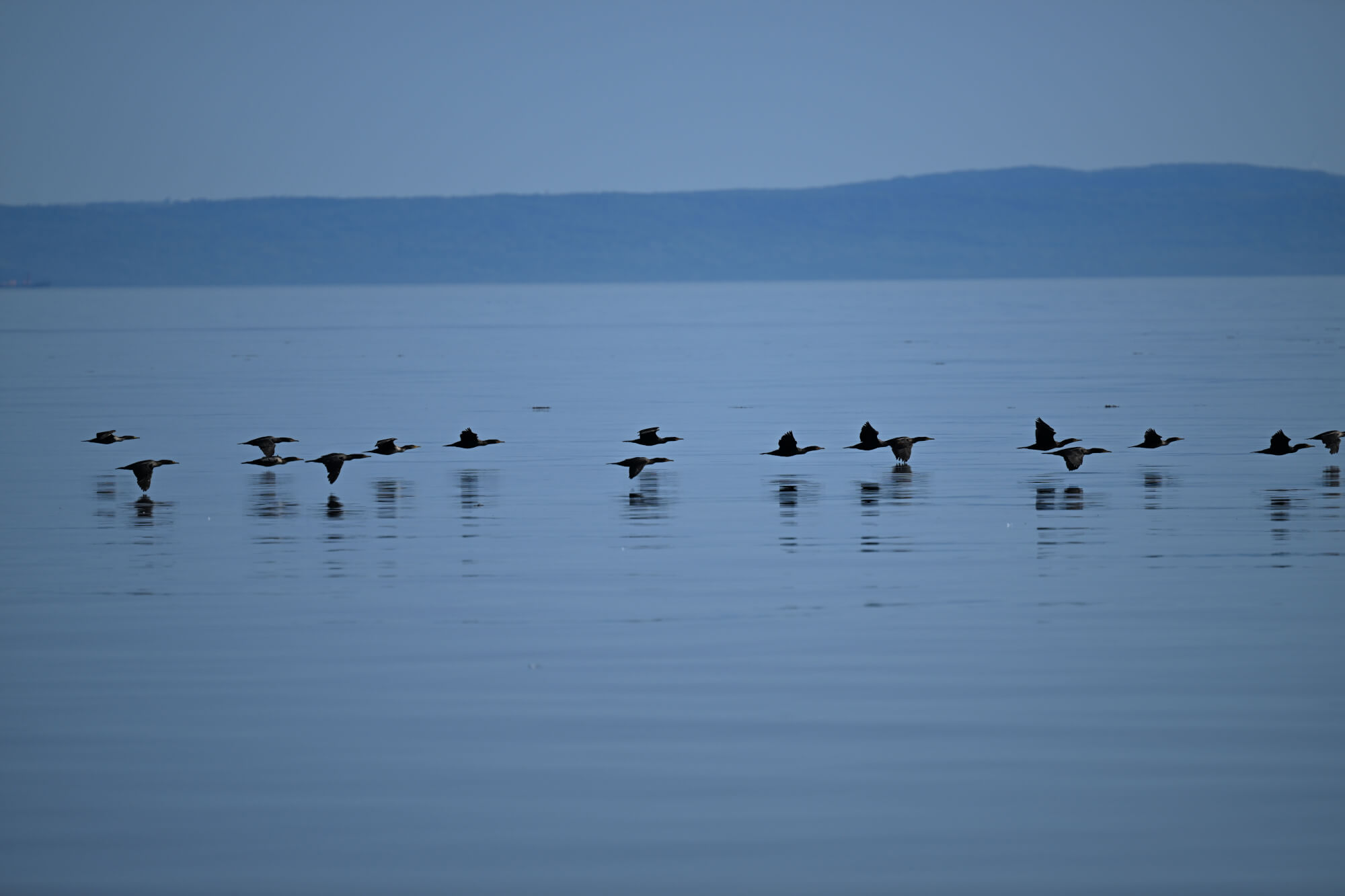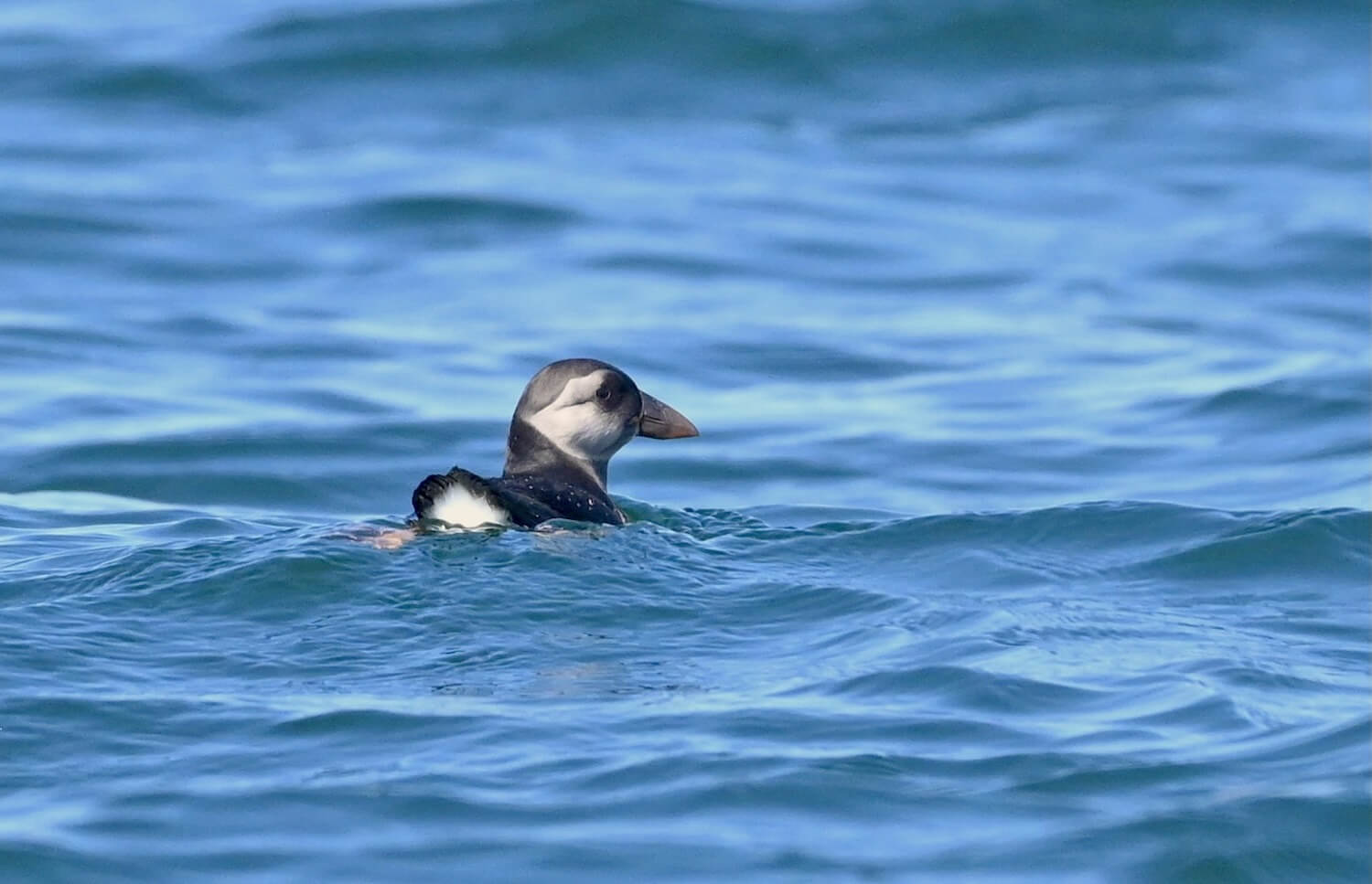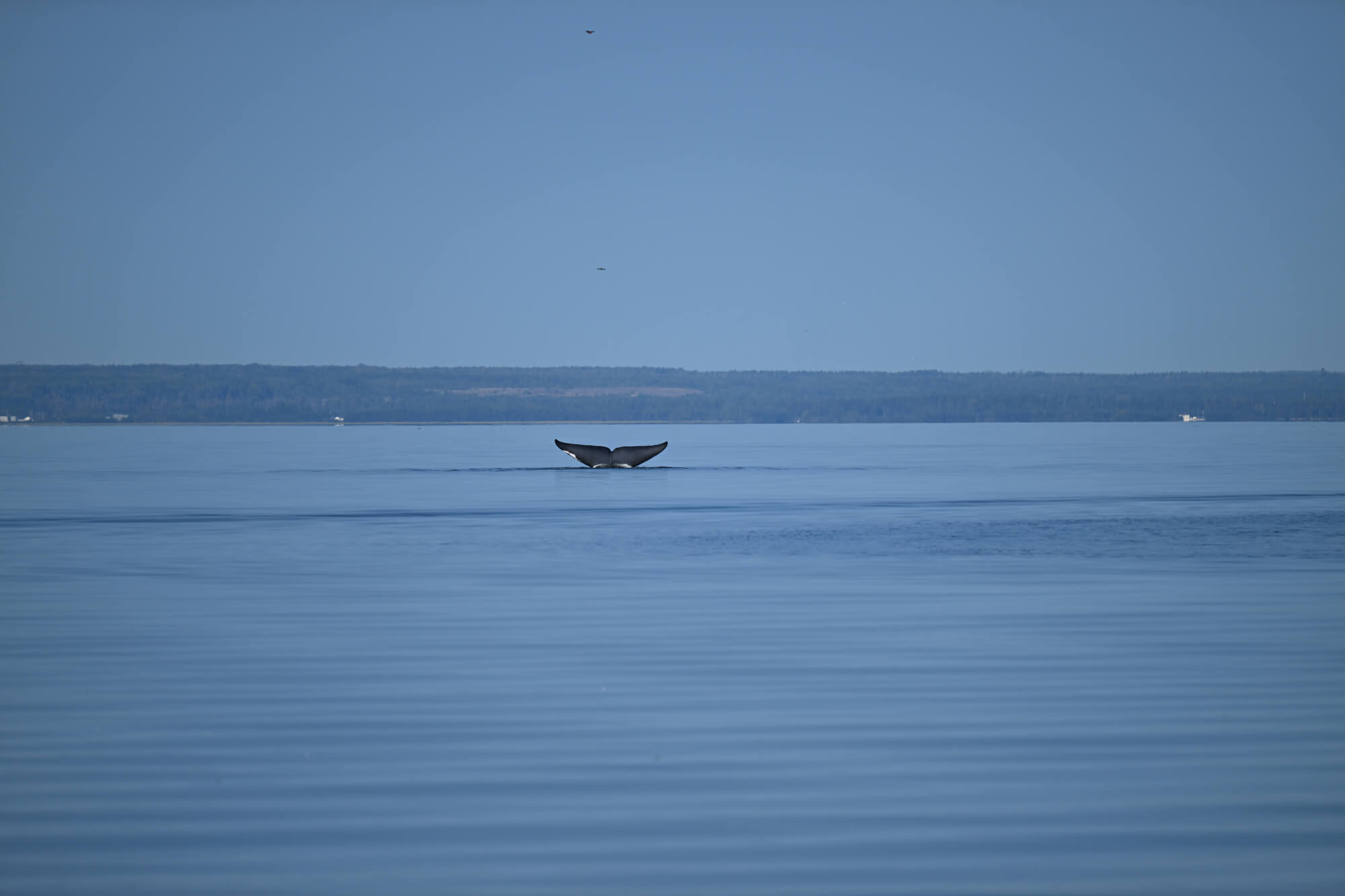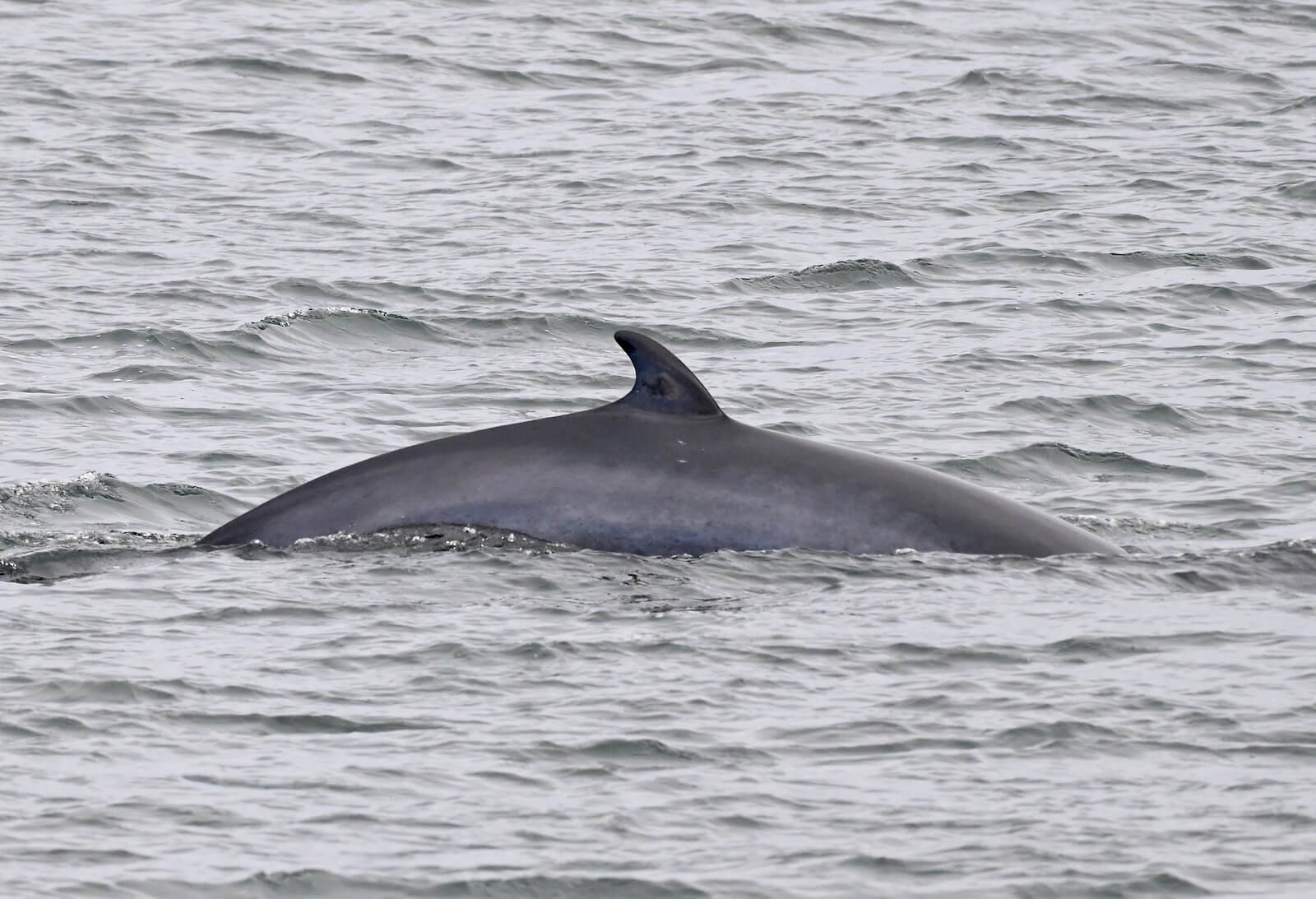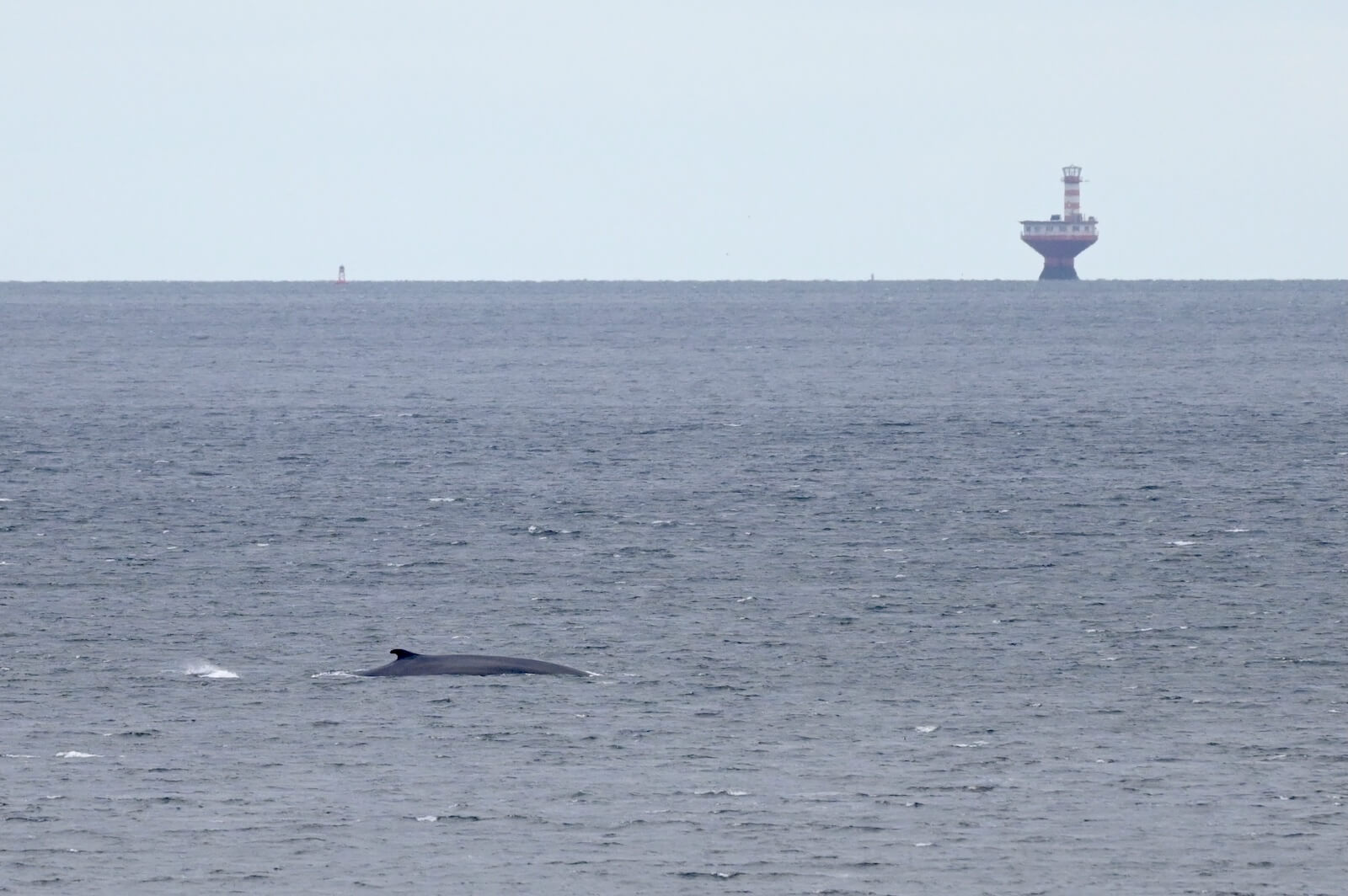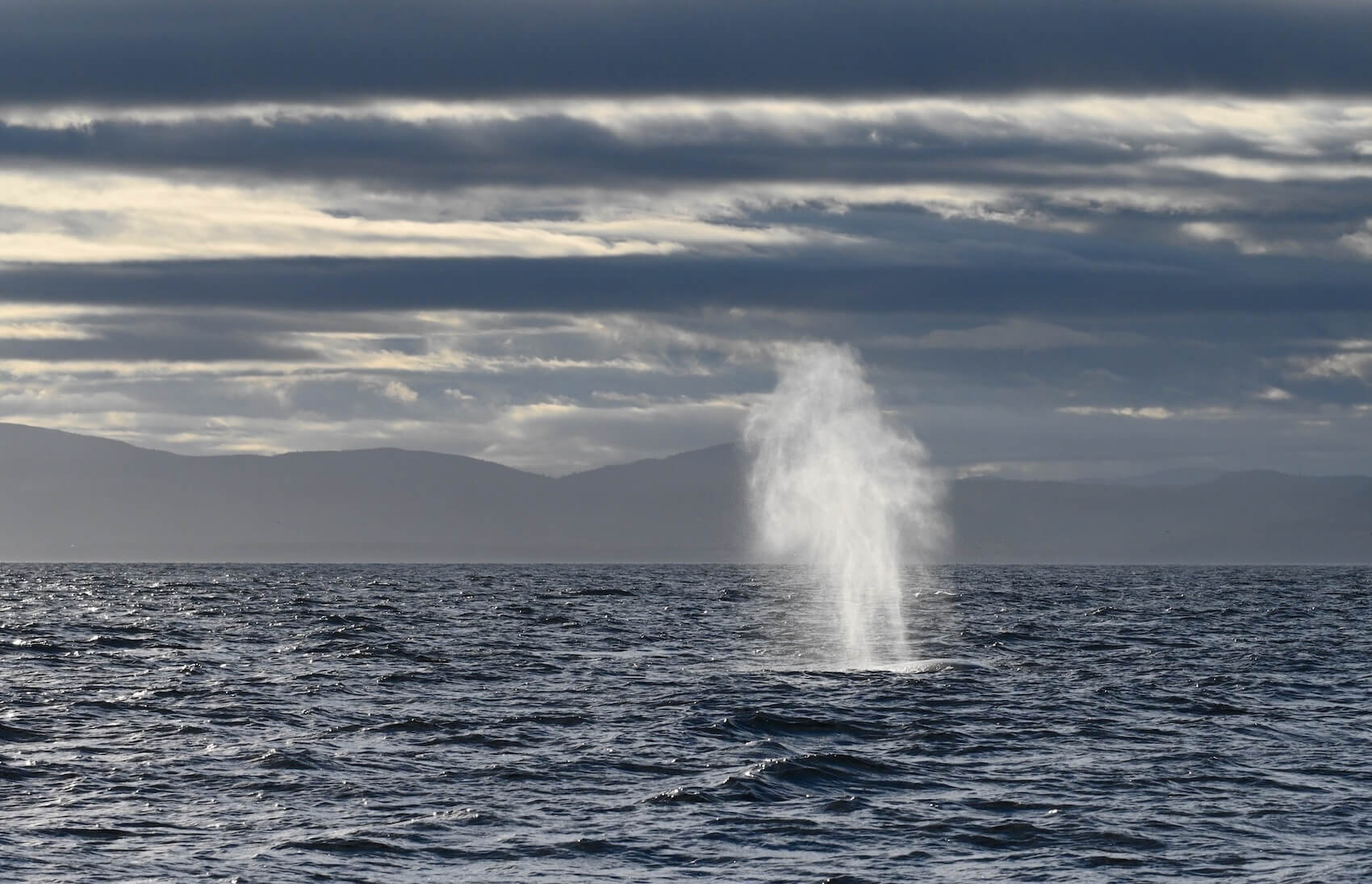September brings not only the dazzling colours of the leaves, but also the powerful blasts of numerous large whales and the migration of birds by the thousands. In the gulf, a few North Atlantic right whales, white-beaked dolphins, and fin whales have been spotted, while in the estuary, it’s blue whales that have been stealing the show, accompanied by the much anticipated and equally celebrated presence of two humpbacks. This year’s whale-watching season isn’t over just yet!
Return of the stars
While the Côte-Nord Migratory Bird Festival is in full swing, it’s by keeping one eye on the sky and the other on the water that unexpected sightings occur in the estuary. “During the pelagic trip, we observed a few curious belugas and a blue whale. “Red-necked phalaropes and Atlantic puffins rounded out the outing,” notes one avid birder. Towering over six metres high, the spout of a blue whale can be heard from afar. On a calm day, if you listen closely, you can even hear the cannon-like blast produced by the largest animal on Earth when it exhales.
In the Saguenay–St. Lawrence Marine Park area, the arrival of several familiar whales has been welcomed in recent days, including blue whales B112 (Torishinto) and B091, fin whales Bp942 (Piton), Bp2819 and Bp935 as well as humpbacks H742 (Chalk) and H944. The latter has visited the estuary every year since it was first sighted in 2019. “It’s comforting to make recurrent observations of a humpback whale that many people know so well,” shares one captain and naturalist. Its return coincides with sightings of many other rorquals that day. Might they have found a significant supply of food in the Marine Park? Quite possible!
Rorquals small and large
“We’re delighted to see Zipper (Bp097) return to our area [after having been seen last spring]!” exclaims a naturalist and wildlife photographer who works in the Marine Park. Known since 1994, this fin whale gets her name from the large zipper-like scar on her right side caused by a run-in with a boat propeller. Following a trip out on the water on September 16, the Group for Research and Education on Marine Mammals (GREMM) reported “nine large rorquals in addition to porpoises everywhere, two belugas […], minke whales, and grey seals.” One fin whale was even reportedly seen breaching by one very lucky captain. That’s right! Indeed, on rare occasions, the second-longest rorqual can breach, a behaviour that requires almost as much energy as it takes an average-sized person to run a marathon!
“On Sunday morning, a harbour seal was scratching and yawning while lying on a rock at Pointe de la Croix,” reported a naturalist who happened to be passing through Les Escoumins. The Saguenay Fjord has also been hosting a few minke whales and belugas, which stand out with their glistening backs in the soft late-summer light. Eight minke whales, most of them feeding, were swimming near Les Escoumins on September 12, according to reports from Mériscope.
Seals and large spouts in the Gaspé
On the other side of the St. Lawrence, pinnipeds dot the waters: “Just grey and harbour seals,” points out one loyal observer. As fall approaches, harbour seals are entering their breeding season. Males can then be heard vocalizing in their effort to find favour with females. A little over nine months later, from mid-May to mid-June, the females will give birth to their pups on the shores of the St. Lawrence! Their offspring will then be nursed for four to six weeks.
Near Mont-Louis, one observer reports about ten spouts offshore: “We think it was a group of fin whales. I’ve never seen so many spouts reach so high into the sky.” The sun was setting and the colours were amazing!” A little farther east, a minke whale was spotted in Chandler, while two humpbacks and two fin whales were identified in Gaspé Bay. Travellers passing through L’Anse-Pleureuse enjoyed good looks at two blue whales and a humpback whale before it was time to get back on the road.
Successful searches
The Sept-Îles Research and Education Centre (CERSI) reported “15 fin whales, 3 humpbacks, and 2 blue whales” in its sector. Also reported were over 100 harbour porpoises as well as Atlantic white-sided dolphins. The Mingan Island Cetacean Study (MICS) noted the presence of several North Atlantic right whales, including #1507 (Manta) and #3940 (Koala), a male and a female, respectively. A mother-calf fin whale duo was also recorded, but the individuals remain to be identified. When they are born, fin whale calves can exceed six metres long.
Near Grande Anse in the Mingan sector, “Four or five curious young harbour seals circled the stationary boat in the middle of the cove,” shares the craft’s operator. A raft of about thirty scoters and a bald eagle complete the picture.
Where are the whales this week? Observation map
These data were reported by our network of observers. They give an idea of the presence of whales and in no way represent the actual distribution of whales in the St. Lawrence. Just for fun! Click on the whale or seal icons to discover the species, the number of individuals, additional information or photos of the sighting. To enlarge the map, click on the icon in the top right-hand corner. The map works well on Chrome and Firefox, but not so well on Safari.
To display the list of sightings, click on the icon in the top left-hand corner.
Thanks to all our collaborators!
Special thanks go out to all our observers who share their love for marine mammals with us. Your encounters with cetaceans and pinnipeds are always a pleasure to read and discover.
On the water or from shore, it is your eyes that give life to this column.
- Thalia Cohen Bacry
- Mathieu Côté
- Guylaine Côté
- Laetitia Desbordes
- Cédric Gascon
- Stéphanie Houde
- Diane Ostiguy
- Renaud Pintiaux
- Pascal Pitre
- Guillaume Savard
- Christine Stadelmann
- Guillaume Synnott
- Ophélie Turgeon
- Marielle Vanasse
And all the others!
Additionally, we would like to acknowledge the following teams that also share their sightings:
Centre d’éducation et de recherche de Sept-Îles (CERSI)
Station de recherche des Îles Mingan (MICS)
Réseau d’observation des mammifères marins (ROMM)
Réseau québécois d’urgence pour les mammifères marins (RQUMM)
Groupe de recherche et d’éducation sur les mammifères marins (GREMM)
Mériscope
Would you also like to share your observations?
Have you seen any marine mammals in the St. Lawrence? Whether it’s a spout offshore or just a couple of seals, drop us a line and send your photos to [email protected]!


